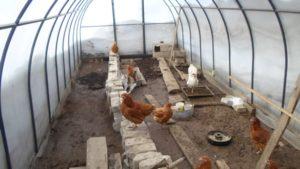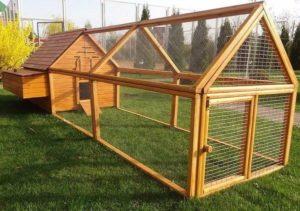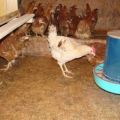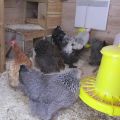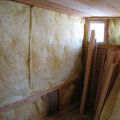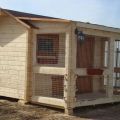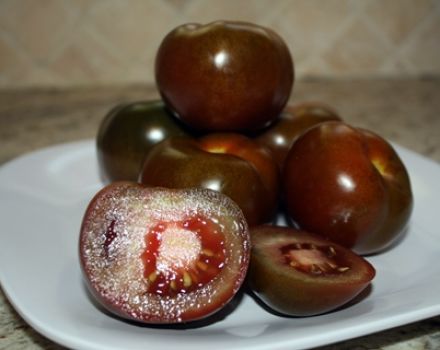Ventilation scheme in the chicken coop and how to properly make a hood with your own hands
You can properly arrange ventilation in your own chicken coop yourself, and very quickly and relatively inexpensively. The main thing is to remember that this installation must ensure the flow of fresh air from the street and the removal of harmful ammonia vapors outside. The house should always be comfortable, quiet and warm, otherwise the chickens will stop rushing and start to get sick.
Why ventilation is needed in a home chicken coop
Many summer residents and rural residents raise chickens. Birds are kept in chicken coops. Such premises are built from bricks, concrete blocks or wood materials, they are equipped with perches and nests for layers, the floor is covered with straw or sawdust. Poultry houses are supplied with electricity and ventilation. Chickens create optimal conditions in which they will comfortably live and carry.
The air in the hen house should be fresh. The house must be kept clean so that the chickens do not start to get sick. Too musty air can lead to the spread of infection and death of birds. If the chicken coop is ventilated with the help of windows or doors, then in winter it will be cold inside the room, and chickens, as you know, at subzero temperatures, stop rushing.
The best solution is to equip an extractor hood in the house. With the help of ventilation, fresh air will always flow into the chicken coop, and the temperature inside the room will remain comfortable for the normal life of the chickens.
Varieties of systems
Ventilation in the chicken coop is easy to do with your own hands. It is best to set up a ventilation system in the house at the time of construction. If the chicken coop has already been built, it is not difficult to equip it with a simple exhaust from plastic pipes.
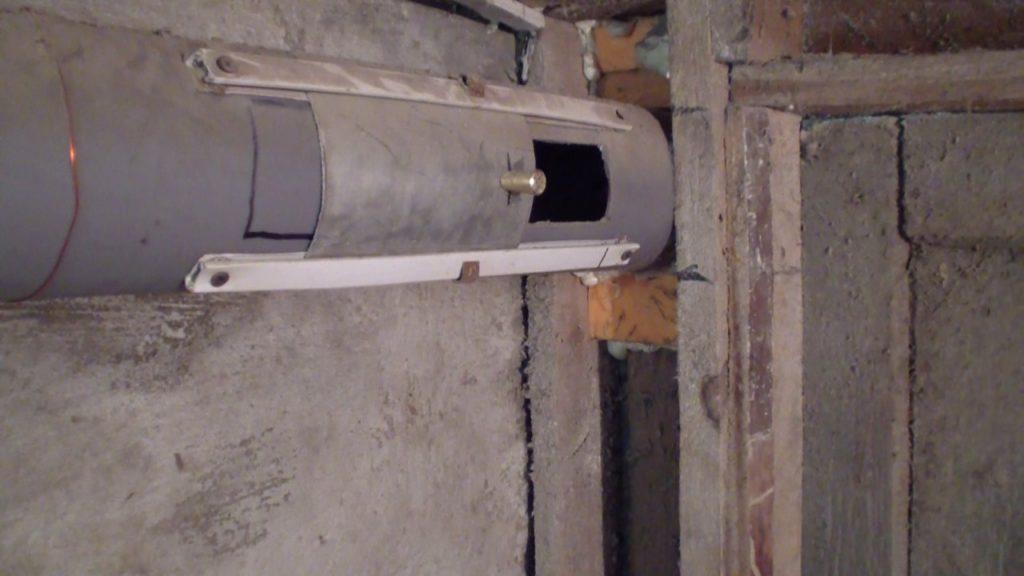
Types of ventilation in the house and characteristics:
- Natural. This system does not require large financial costs. Consists of two windows or openings located at the top, on opposite walls of the room. From the slightly open window, air will constantly flow into the hen house, and then exit into the hole from the opposite side.
- Circulating. To equip this installation, you need to buy at least two plastic pipes. Fresh air will come from the street into one, and go out near the floor of the chicken coop. The upward vapor will be diverted from the house using another pipe.
- Mechanical. This installation will require small financial costs. Ventilation of the room with this method will be carried out using an electric fan or hood. Of course, in poultry houses without electricity, such equipment will not work.First, you need to wire the chicken coop.
Which particular ventilation system to give preference to, each poultry farmer decides for himself. The most common is circulation. With this installation, fresh air is regularly supplied to the room, and the vapors are discharged outside. And for arranging ventilation, only two plastic pipes are needed, which can be bought at a hardware store.

Primary requirements
When arranging ventilation in the poultry house, certain rules must be followed. First, the birds in the hen house should be comfortable, warm and not damp. This means that the hood should exclude the appearance of drafts, provide a minimum, but uninterrupted supply of fresh air in any weather and any season.
Air masses should not stagnate in the room, vapors must be taken out. The air speed should be 2-6 meters per second.
Secondly, the ventilation unit must be silent. Chickens react sharply to sudden and loud sounds. Stress can cause a drop in egg production. Third, the ventilation unit must not be clogged. It is important that the poultry farmer has the opportunity to clean the duct at any time.
How to make ventilation in a chicken coop with your own hands
Usually, poultry farmers set up the ventilation system in the house on their own. This is not difficult. Using a drawn sketch or a simple diagram, you can make an extractor hood in the chicken room with your own hands.
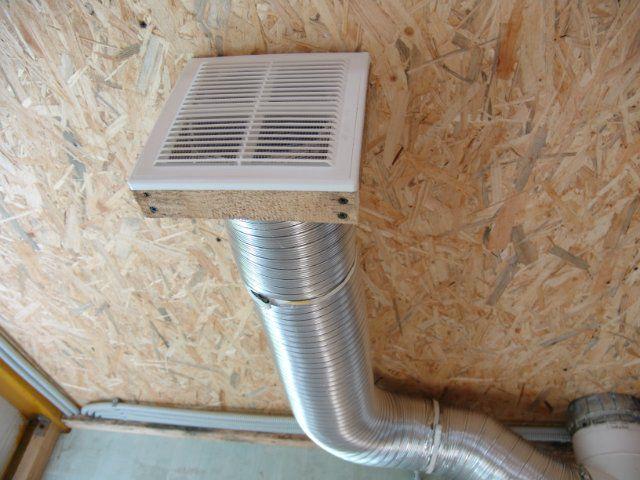
Natural ventilation
With this method, the room is ventilated using two small windows located at the top, on opposite walls. Air will enter the house through one window, and out through the other. It is advisable in the hen house, near the ceiling, to put small rectangular hinged windows that open inward.
Open-circuit or circulating system
Most often, a hood is installed in poultry houses, which provides constant air circulation. For its arrangement, two pipes with a diameter of at least 20 centimeters and a length of 2 meters are needed. Air will enter the house through one duct and exit through the other. For the installation of two pipes in the roof, two holes are made for the pipe diameter. They should be located at opposite walls to each other. It is advisable to install the inlet pipe away from perches and nests.
One of the highways will be intended for the supply of fresh air. The pipe is installed in such a way that it does not reach the floor by 25-35 centimeters and rise above the roof by 45-55 centimeters; you can put a rain deflector at the top. The second line is designed to remove vapors to the outside. The pipe is installed under the ceiling. The top should protrude outward by at least 35 centimeters. The bottom of a properly installed pipe is 25 centimeters from the ceiling.
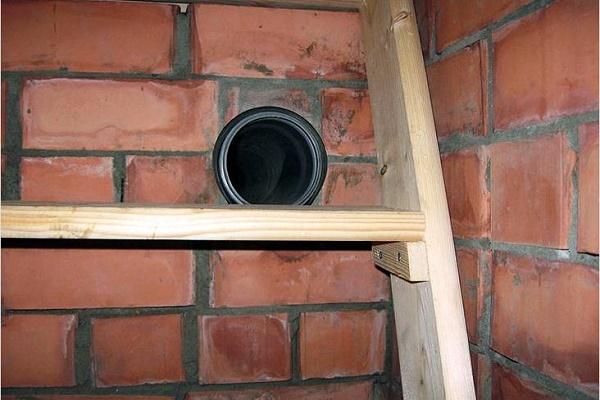
When installing ventilation, you may need knees with an angle of 90 degrees, fasteners, deflectors, dampers. For the chicken coop, simple plastic sewer pipes are usually used, which can be purchased at any hardware store.
Mechanical extraction
In the chicken coop, you can equip a supply and exhaust mechanical ventilation system. With its help, fresh air will regularly enter the room, and dirty air will be removed outside. The supply (inflow) is usually equipped at the bottom of the room, and the outlet (exhaust) is at the top. In some electrical appliances, cold air from the street is heated in heaters. The system itself consists of pipes and air handling devices located in one housing. Such an installation is expensive. It is advisable to use it only in large poultry farms.
For a personal subsidiary farm, it is easier to buy an exhaust fan and mount it in the upper window.If necessary, the device can be turned on for a couple of minutes a day.
For winter
The house should not be hot in summer and too cold in winter. We must always remember that at temperatures in the hen house below 10 degrees Celsius, chickens may stop rushing. Usually, heating the room in winter is provided with electrical appliances and bio-litter. Under these conditions, a lot of ammonia fumes are generated in the house. Too stuffy air can make birds feel unwell.

In winter, the room must be ventilated, otherwise the chickens will suffocate in the ammonia vapor. True, if you open a door or window, there is a risk of letting in a lot of cold air and chilling the birds. It is better to build circulating ventilation from two plastic pipes in the poultry house from the summer. This installation will provide a constant supply and exhaust air. It is important that the temperature in the hen house at any time of the year is 20-25 degrees Celsius.
Typical installation errors
You can build a ventilation unit in the poultry house yourself. The main thing is to avoid a number of mistakes. First, the air ducts must be firmly fixed so that they do not vibrate from the wind, do not make noise and do not frighten the chickens. Secondly, the hood should be at the top, near the ceiling. The supply of fresh air should go through another pipe, lowered to the floor.
Thirdly, the air ducts must not be damaged. For the arrangement of ventilation, plastic pipes without cracks and holes are used. A properly installed ventilation unit will help create a comfortable environment for the hens.
